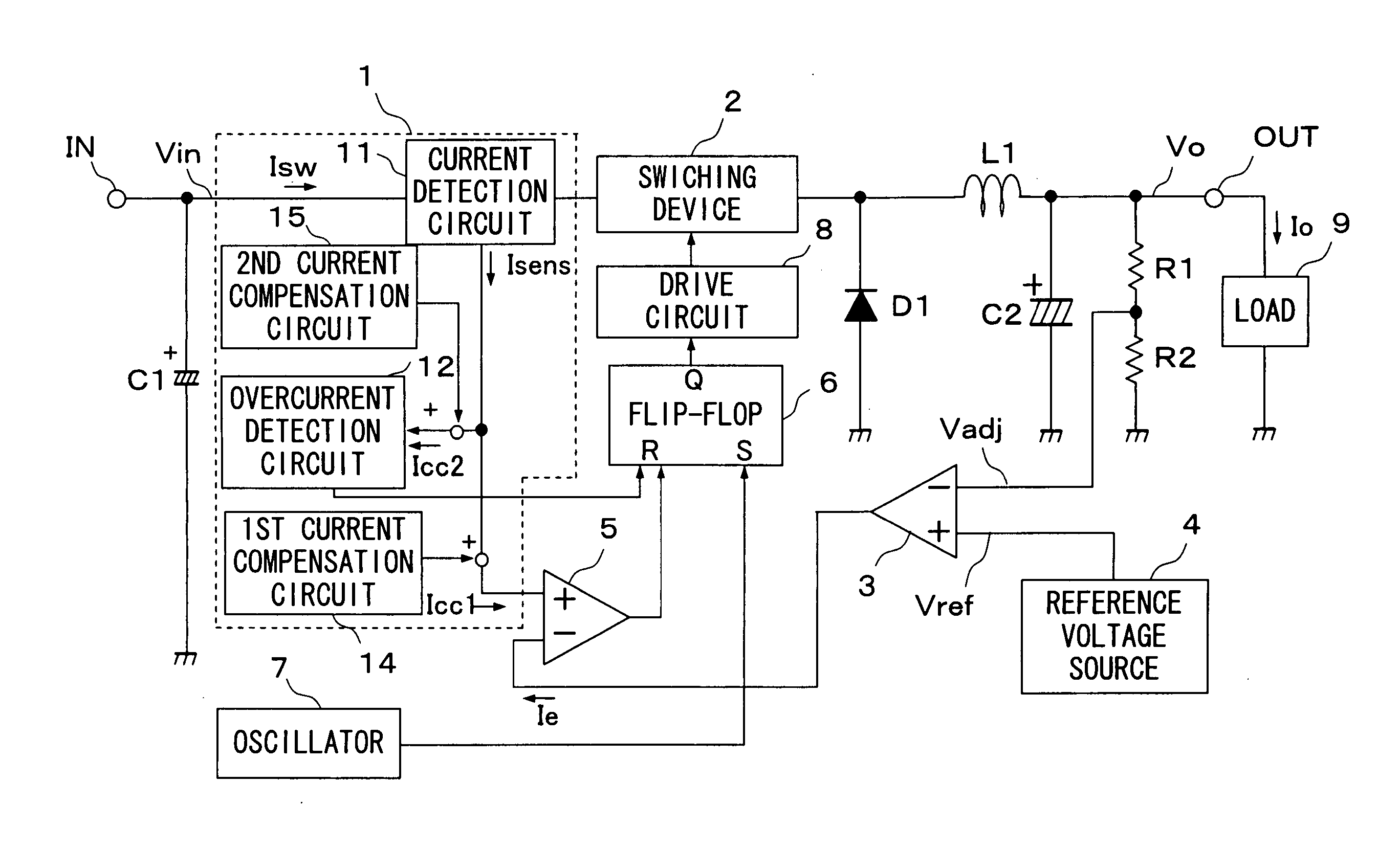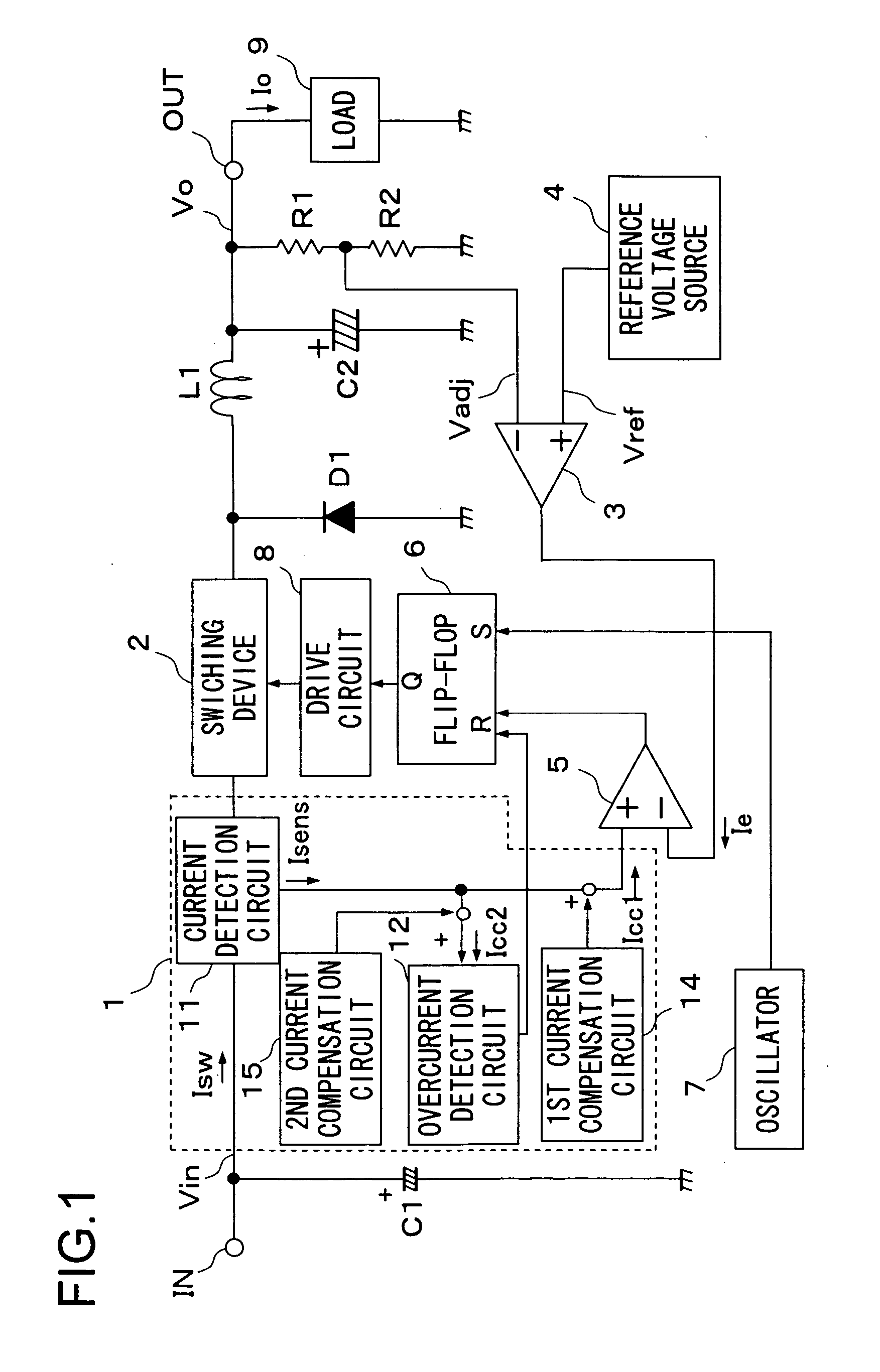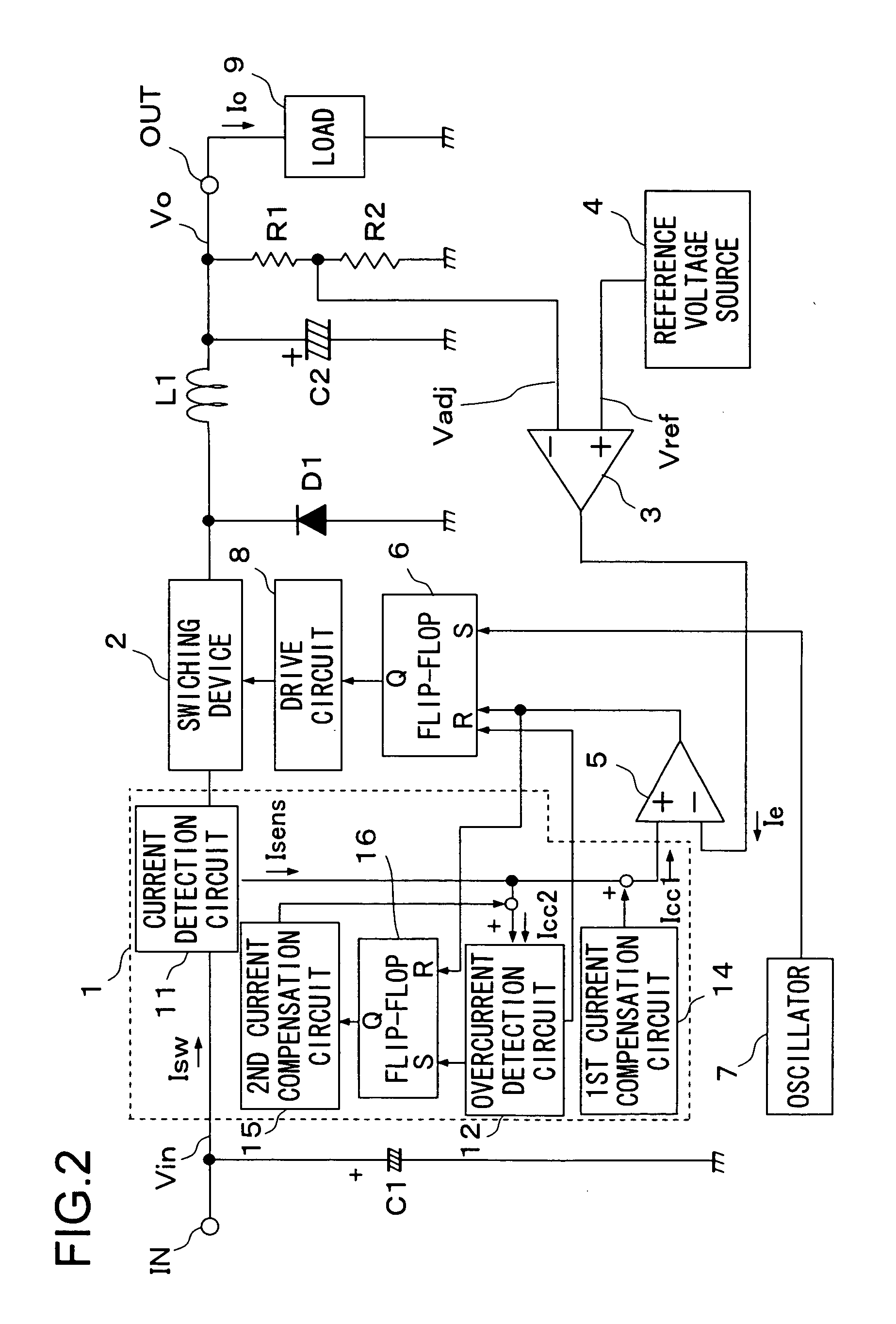Switching power supply apparatus and electric applianance therewith
- Summary
- Abstract
- Description
- Claims
- Application Information
AI Technical Summary
Benefits of technology
Problems solved by technology
Method used
Image
Examples
first embodiment
[0051] Hereinafter, embodiments of the present invention will be described with reference to the accompanying drawings. FIG. 1 is a circuit block diagram showing the electrical configuration of the switching power supply apparatus of the invention. In FIG. 1, such circuit components and blocks as find their counterparts in FIG. 6 are identified with common reference numerals and symbols, and their explanations will not be repeated. The switching power supply apparatus shown in FIG. 1 differs from the switching power supply apparatus shown in FIG. 6 in that, within the current control portion 1, a first current compensation circuit (first current compensation portion) 14 is provided instead of the current compensation circuit 13, and that a second current compensation circuit (second current compensation portion) 14 is additionally provided.
[0052] The first current compensation circuit 14 is configured and operates in similar manners to the current compensation circuit 13 shown in FI...
second embodiment
[0057]FIG. 2 is a circuit block diagram showing the electrical configuration of the switching power supply apparatus of the invention. In FIG. 2, such circuit components and blocks as find their counterparts in FIG. 1 are identified with common reference numerals and symbols, and their explanations will not be repeated. The switching power supply apparatus shown in FIG. 2 differs from the switching power supply apparatus shown in FIG. 1 in that, within the current control portion 1, a flip-flop (latch portion) 16 is additionally provided between the overcurrent detection circuit 12 and the second current compensation circuit 15.
[0058] The flip-flop 16 receives, at the set input terminal S thereof, the set signal (overcurrent detection signal) from the overcurrent detection circuit 12, and, at the reset input terminal R thereof, the output signal of the comparator 5. The output signal from the output terminal Q of the flip-flop 16 is fed to the second current compensation circuit 15....
third embodiment
[0062]FIG. 3 is a circuit block diagram showing the electrical configuration of the switching power supply apparatus of the invention. In FIG. 3, such circuit components and blocks as find their counterparts in FIG. 2 are identified with common reference numerals and symbols, and their explanations will not be repeated. The switching power supply apparatus shown in FIG. 3 differs from the switching power supply apparatus shown in FIG. 2 in that the set signal fed from the overcurrent detection circuit 12 to the flip-flop 16 is not used and instead an AND gate (logic gate) 17 is additionally provided that outputs a set signal with which the flip-flop 16 is set.
[0063] The AND gate 17 is a two-input, one-output AND gate. The AND gate 17 receives, at one input, the pulse signal from the oscillator 7 and, at the other input, the output signal of the flip-flop 6. The output signal of the AND gate 17 is used as a set signal for the flip-flop 16.
[0064] In the overcurrent condition, the on-...
PUM
 Login to View More
Login to View More Abstract
Description
Claims
Application Information
 Login to View More
Login to View More - R&D
- Intellectual Property
- Life Sciences
- Materials
- Tech Scout
- Unparalleled Data Quality
- Higher Quality Content
- 60% Fewer Hallucinations
Browse by: Latest US Patents, China's latest patents, Technical Efficacy Thesaurus, Application Domain, Technology Topic, Popular Technical Reports.
© 2025 PatSnap. All rights reserved.Legal|Privacy policy|Modern Slavery Act Transparency Statement|Sitemap|About US| Contact US: help@patsnap.com



